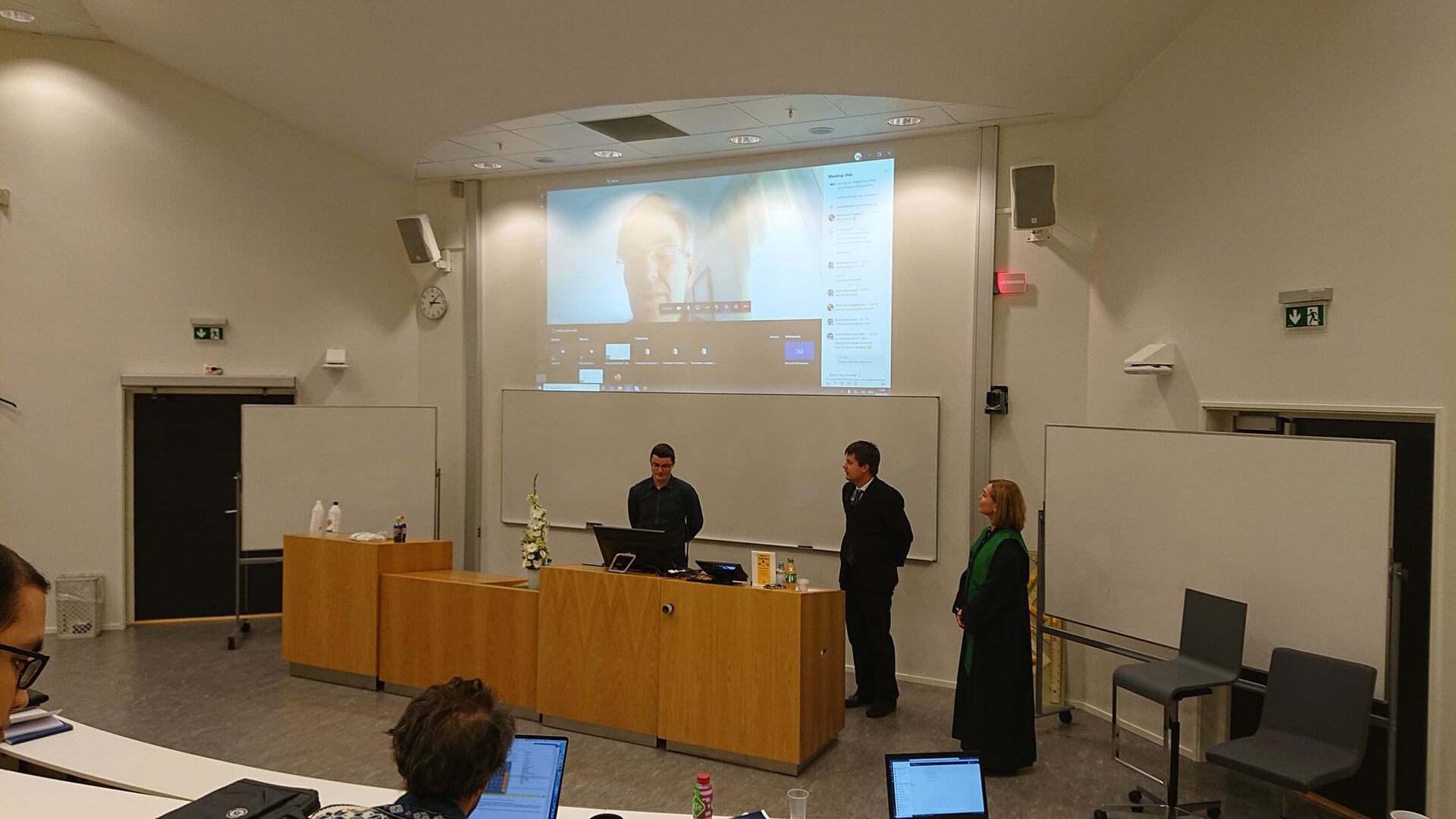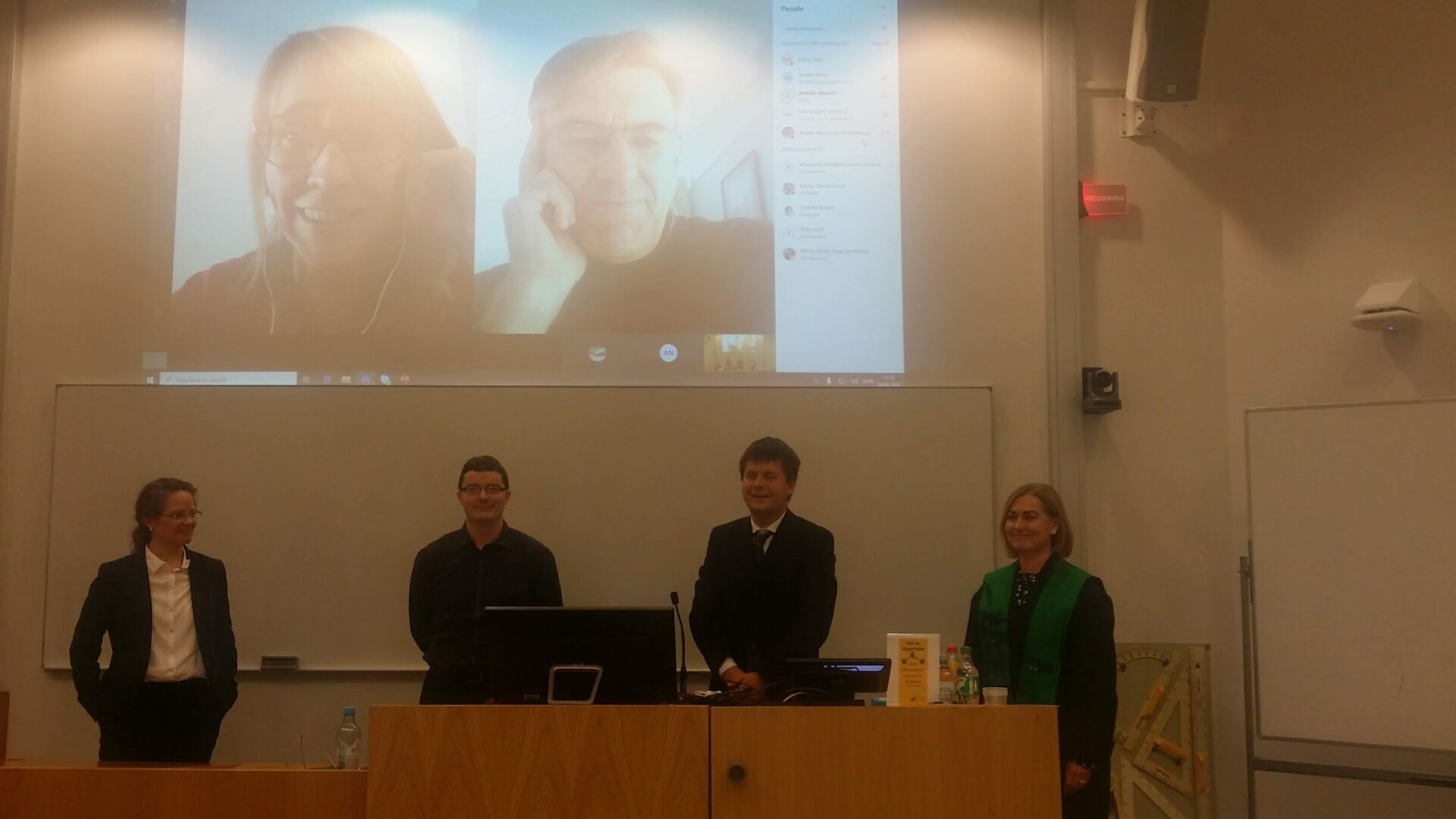Dr. Obst defended his thesis in a mixed physical/online event. His external opponents, Stuart Macgregor from the Institute of Chemical Sciences, Heriot-Watt University (UK) and Dr. Amalia Poblador-Bahamonde from the University of Geneva, Switzerland both participated online. In addition to a small crowd physically present in the auditorium, including the internal opponent Dr. Bjarte Aarmo Lund, the trial lecture was streamed and thus available to watch for all interested, and this allowed questions to be asked to the candidate also from outside of Norway.
The supervisors of Dr. Obst work was Assoc. Prof. Kathrin Hopmann and Prof. Luca Frediani, both from the Hylleraas Centre at UiT The Arctic University of Norway, and Assoc. Prof. Annette Bayer from the Department of Chemistry at UiT The Arctic University of Norway.
The thesis is published in Munin and available at: https://hdl.handle.net/10037/18958

Popular scientific abstract:
CO2 is a non-toxic, abundant and readily available gas, which has the potential to become an important carbon source in chemical synthesis. The clear advantage of CO2 is its sustainability, in contrast to typical carbon sources such as oil, coal, or natural gas, which are in the process of depletion. However, the use of CO2 also poses a big challenge as it features a high thermodynamic and kinetic stability. Therefore, the aim of this thesis is to help in overcoming the chemical inertness of CO2 by computational investigation of CO2-converting catalysts. Catalysts are generally an important tool in chemical synthesis, and their ability to decrease activation energies could help enabling a wider use of CO2 as a carbon source. In this work we concentrated our enquiry on homogeneous catalysts, as they feature defined reactive species and large reactive surfaces. For the metal center, we concentrated on base transition metals, such as Cu or Ni, which are less understood and considerably less expensive than the more commonly used heavy transition metals. We were especially interested in C-C bond forming reactions with CO2 as they constitute new reaction routes, giving access to chemicals such as carbonates or pharmaceuticals. By using computational chemistry and cooperating with experimental chemists, we where able to gain insight into CsF-, Cu- and Ni-mediated carboxylation reactions. The results of these investigations yielded several interesting findings: First, a reaction mechanism for Cs-mediated carboxylation of organoboranes was identified which was able to explain the observed substrate preference and predicts an organocaesium intermediate. Second, the reaction mechanism for Cu- IPr-catalyzed carboxylation of organoboranes was investigated showing the formation of an organocopper intermediate before the insertion of CO2 and yielding different behaviours for the Cu-CO2 interaction, depending on the electronic nature of the coordinating carbon atom. The calculation of IR spectra for Phen-Ni(I)-alkyl species helped identifying their thermally unstable carboxylation products and the calculation of the CO2 insertion TSs support the conclusion of strong Ni-CO2 interactions.

